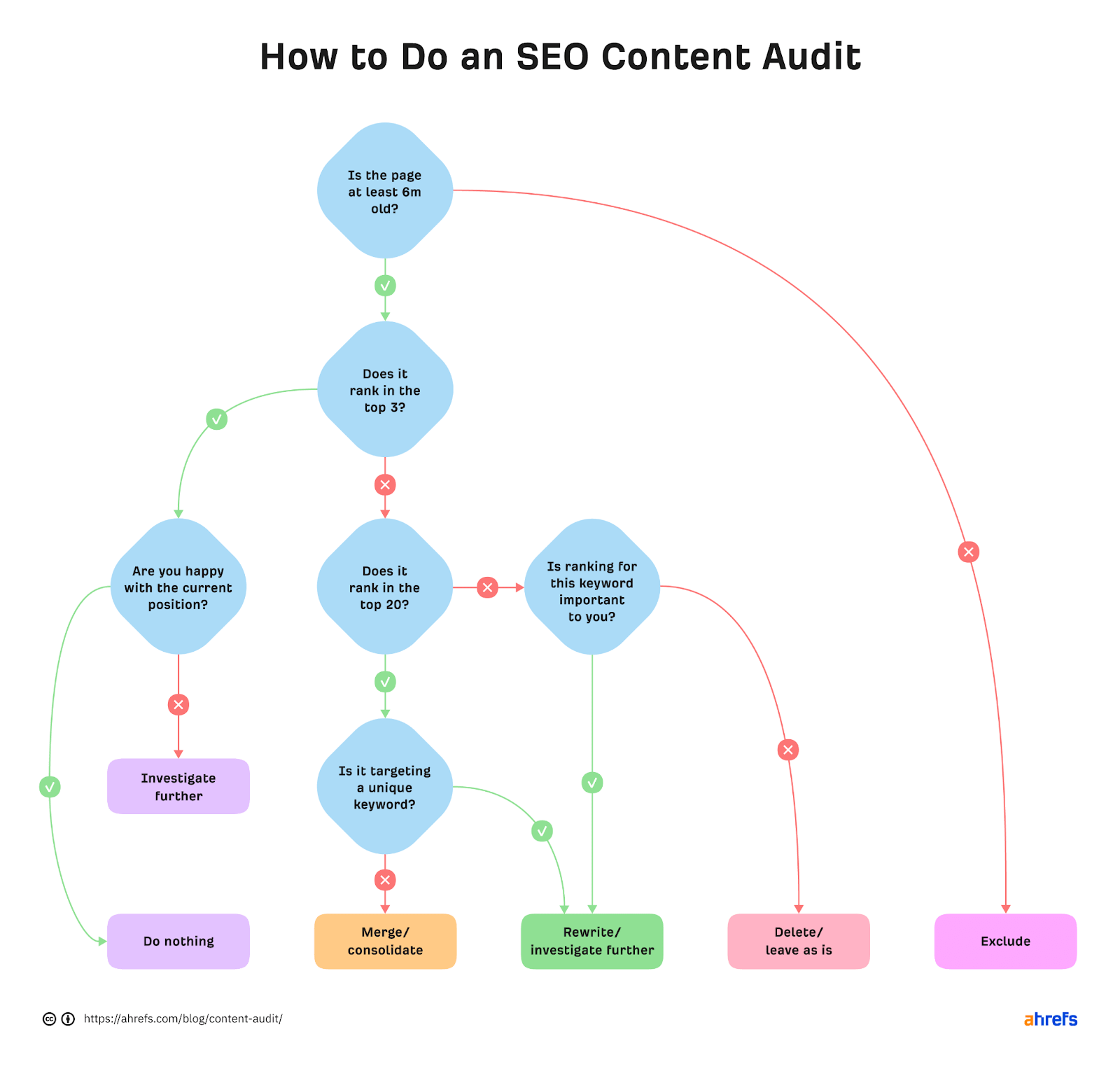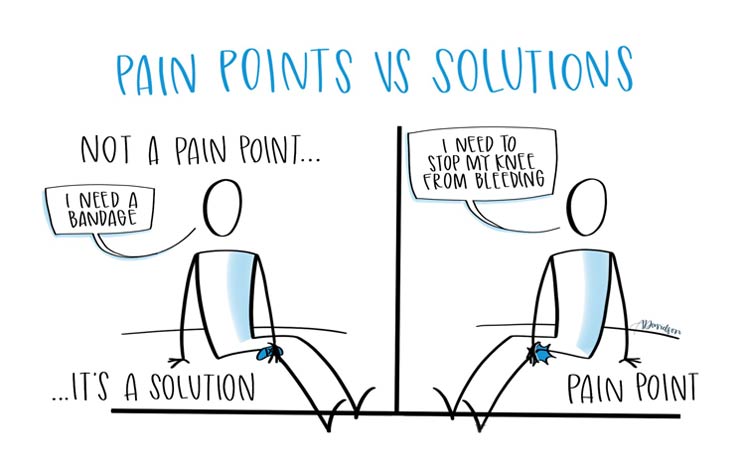[ad_1]
Few things shoot fear into the heart of a marketer than the words “economic downturn.” Why? Because we know.
We know that marketing will be one of the first places spending cuts will be made. Our ad budgets will be reduced, departmental positions will be reevaluated, hiring will be put on hold, and that new software or upgrade we asked for? Off the table for the foreseeable future.
But here’s the reality: A smaller budget doesn’t have to negatively impact success with content marketing. Instead, use this time to take a fresh look at the impact of your content marketing resources. How are you leveraging technology and the people on your team right now — and could you be doing better?
With that in mind, here are seven ways you can do more with your content, with fewer resources, in any economy.
1. Identify Which Content Marketing Resources Are Pure Gold
Not all content is created equal. Most content marketers can pinpoint their highest-traffic pieces — but high-level metrics only tell part of the story. For example, just because a page or a video collects a lot of views doesn’t mean the traffic will convert.
Take a beat and go deeper into your numbers. Review and track content marketing metrics like:
- Conversions per page view (i.e., web forms, additional pages viewed, on-page engagements, shares of your content, etc.)
- To calculate, divide total page views by the number of goals completed.
- Revenue per page view
- To calculate, divide total page views by the total revenue attributed to the page.
- Bottom-of-funnel content conversion rates (i.e., completing a lead form on a product demo page, asking for more information on a brand vs. competitor page, etc.)
- To calculate, divide total bottom-of-funnel content page views by the number of conversions.
By identifying your content that performs better than average, you can “find the gold” in the form of key insights. Then you can apply what you’ve learned to other web pages, email campaigns, ebooks, and more. Not to mention: Measurement is more important than ever, so when you know what performs best, you can maximize the ROI of your content marketing efforts, too.
2. Don’t Be Afraid to Rethink Your Content
As content marketers who live in an SEO-driven world, we’re governed by what Google wants. We know that search engines prize a combination of reader-first, unique, helpful, and fresh content.
Big brands know this as well — which is why you often see Fortune 500 companies updating their content regularly.
It’s easy to get caught up in creating new content that Google will love, but what about your existing content? There’s nothing worse than going to a website and realizing the link you clicked on is four years old, and all the information within the article is terribly outdated.
If you haven’t put your content into an update cadence yet, this is a good time to start. Here are a few tips as you begin:
- Audit existing content for updates. Start by considering content that is at least six months to one year old (depending on your posting frequency).
- Understand how it is being ranked by search engines. If it’s in the top three spots on Google, and the content is evergreen, there’s no need to update.
- Prioritize updating pieces that are not ranking highly and are attempting to rank for important keywords to your brand.
- Decide on a feasible cadence to update the most needed pieces, be it once every month, for example.
3. Level Up for Free
One of the first cuts to content marketing resources is often the budget for education or the opportunity for your team to gain new skills by attending workshops at tradeshows and conferences. The good news is you can level up your team’s knowledge for free.
HubSpot Academy offers thousands of training hours on content marketing for free, including certifications that can increase your team’s expertise and authority (part of Google’s E-E-A-T formula for quality content). Ditto for Semrush Academy for your team’s ability to master search engine optimization (SEO).
4. Serve the Reader by Improving UX and RX
It’s easy to get into a rut where instead of pushing your website’s resource center to the limits of design and readability, you simply accept its limitations. You resign yourself to repetitive content structure and boring page elements, rather than taking the extra effort to shake things up.
But getting more out of your existing content marketing resources means challenging anything that is detrimental to the site visitor’s user experience (UX) and the reader experience (RX).
Some key ways to improve both include:
- Removing barriers to UX, like code bloat (needlessly long code in a website’s programming) and large media assets that slow page load time.
- Ensuring a good experience regardless of device type by looking at your content on different types of devices.
- Making content more readable (especially on mobile) with shorter paragraphs, more subheadings, table of contents navigation, and elements like bulleted lists, tabs, and accordions.
- A thoughtful and intuitive internal linking strategy to facilitate the customer journey.
- Writing for widespread comprehension and avoiding jargon, acronyms, and grandiose language that makes your content difficult to understand.
- Making it easier to convert visitors to your site with logical calls to action, such as “Learn More” buttons at the end of a blog post and web forms with minimal requirements. (No one wants to give out their personal phone number in 2023!)
- Addressing accessibility issues for sight or hearing-impaired visitors.
- Optimizing for voice search assistants (e.g., Alexa and Siri) and other search tools that use natural language processing technology.
Google recently moved all websites to mobile-first indexing. This means that even if your site is primarily accessed through desktop devices, the extent to which it is mobile RX- and UX- friendly will impact your rankings on desktop as well as mobile search.
5. Know Your Niche and Cater to It
In a slow economy, content marketing becomes even more competitive. So it’s critical to know what drives and motivates your company’s ideal customer types.
You can do more with less by refining your core customer personas and identifying the messaging that produces the most conversions.
Here are a few steps you can take to get started now:
- Understand your core persona’s pain points and what drives them to seek a solution.
- Create content that leads with those pain points but also offers solutions.
- Gate your most valuable, actionable content to increase the number of leads you gather.
6. Create New Audiences and Applications
While you’re drilling down on your target audience, don’t forget to consider new audiences and new product applications. For example, you can upsell current customers by educating them on additional ways they can use your product or service.
It’s also likely that there’s a niche or emerging market that neither you nor your competitors have previously identified. Now is the time to tap into new audiences by tailoring your content marketing approach or tweaking your offerings.
Here are a few tips to get started:
- Expand your reach by creating a presence on new social media sites.
- Experiment with new content mediums, like posting videos on YouTube or creating podcasts.
- Promote your content on third-party sites or in third-party newsletters to reach new subscribers.
- Start a customer referral program and incentivize current customers to set up demos with those in their network.

7. Build a Stack of Free Content Marketing Resources
No budget? No problem! There are many free content marketing resources you can leverage right now. Some of our favorites are:
- Semrush: Input up to 10 queries a day for keyword and in-depth data on competitors’ sites.
- Ahrefs: Connect your Google-managed websites and set up projects to track key metrics over time.
- MobileMoxie: See (visually) how your site looks on multiple device types.
- Dashword: Save time creating content with free AI-generated content briefs.
- Keywords Everywhere: Use this free browser extension to get instant data on keywords and competitors on search engine results pages (SERPs).
- SeoQuake: Use this free browser extension to get instant data about any website or page, such as traffic, keywords, and meta tags (free Semrush account required).
- Free SEO tools from Merkle, including an XML sitemap generator, automated schema markup generator, mobile-friendly website tester, and locale-based search results.
- ChatGPT: Give ChatGPT instructions, and this AI will craft copy. For example, ask ChatGPT to come up with subject lines for an email newsletter promoting a spring sale, and it will respond. However, answers might need to be edited for clarity.
While you may be facing budget constraints right now, the good news is that you don’t have to sit around and wait for the economic downturn to pass. By optimizing the use of your content marketing resources, you can shake things up and even try new tools, setting your content strategy up for success.
Learn more about content strategy every week. Subscribe to The Content Strategist newsletter for more articles like this sent directly to your inbox.
Image by
redgreystock
[ad_2]
Source link











